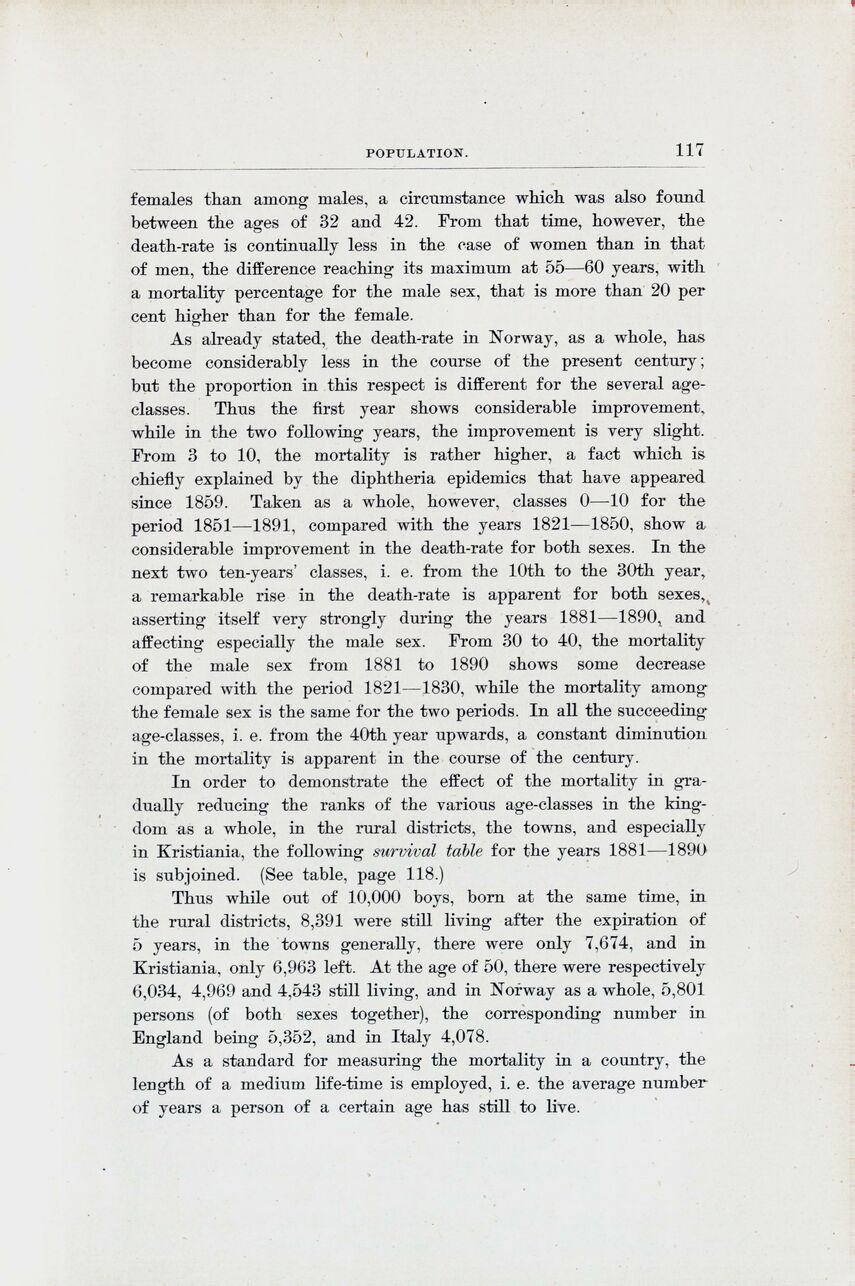
Full resolution (JPEG) - On this page / på denna sida - Population, by G. Amnéus

<< prev. page << föreg. sida << >> nästa sida >> next page >>
Below is the raw OCR text
from the above scanned image.
Do you see an error? Proofread the page now!
Här nedan syns maskintolkade texten från faksimilbilden ovan.
Ser du något fel? Korrekturläs sidan nu!
This page has been proofread at least once.
(diff)
(history)
Denna sida har korrekturlästs minst en gång.
(skillnad)
(historik)
females than among males, a circumstance which was also found
between the ages of 32 and 42. From that time, however, the
death-rate is continually less in the case of women than in that
of men, the difference reaching its maximum at 55—60 years, with
a mortality percentage for the male sex, that is more than 20 per
cent higher than for the female.
As already stated, the death-rate in Norway, as a whole, has
become considerably less in the course of the present century;
but the proportion in this respect is different for the several
age-classes. Thus the first year shows considerable improvement,
while in the two following years, the improvement is very slight.
From 3 to 10, the mortality is rather higher, a fact which is
chiefly explained by the diphtheria epidemics that have appeared
since 1859. Taken as a whole, however, classes 0—10 for the
period 1851—1891, compared with the years 1821—1850, show a
considerable improvement in the death-rate for both sexes. In the
next two ten-years’ classes, i. e. from the 10th to the 30th year,
a remarkable rise in the death-rate is apparent for both sexes,
asserting itself very strongly during the years 1881—1890, and
affecting especially the male sex. From 30 to 40, the mortality
of the male sex from 1881 to 1890 shows some decrease
compared with the period 1821—1830, while the mortality among
the female sex is the same for the two periods. In all the succeeding
age-classes, i. e. from the 40th year upwards, a constant diminution
in the mortality is apparent in the course of the century.
In order to demonstrate the effect of the mortality in
gradually reducing the ranks of the various age-classes in the
kingdom as a whole, in the rural districts, the towns, and especially
in Kristiania, the following survival table for the years 1881—1890
is subjoined. (See table, page 118.)
Thus while out of 10,000 boys, born at the same time, in
the rural districts, 8,391 were still living after the expiration of
5 years, in the towns generally, there were only 7,074. and in
Kristiania, only 6,963 left. At the age of 50, there were respectively
6,034, 4,969 and 4,543 still living, and in Norway as a whole, 5,801
persons (of both sexes together), the corresponding number in
England being 5,352, and in Italy 4,078.
As a standard for measuring the mortality in a country, the
length of a medium life-time is employed, i. e. the average number
of years a person of a certain age has still to live.
<< prev. page << föreg. sida << >> nästa sida >> next page >>